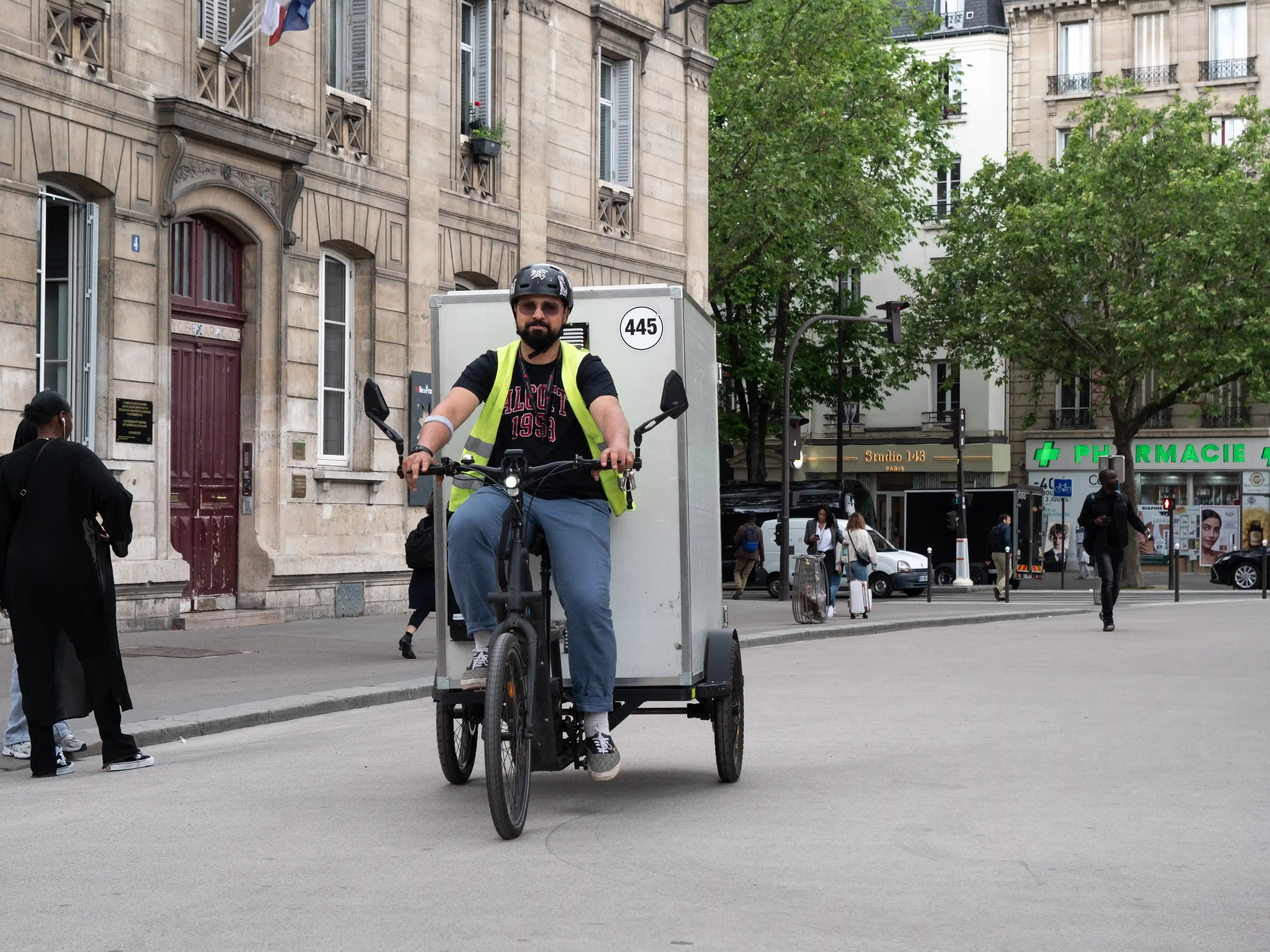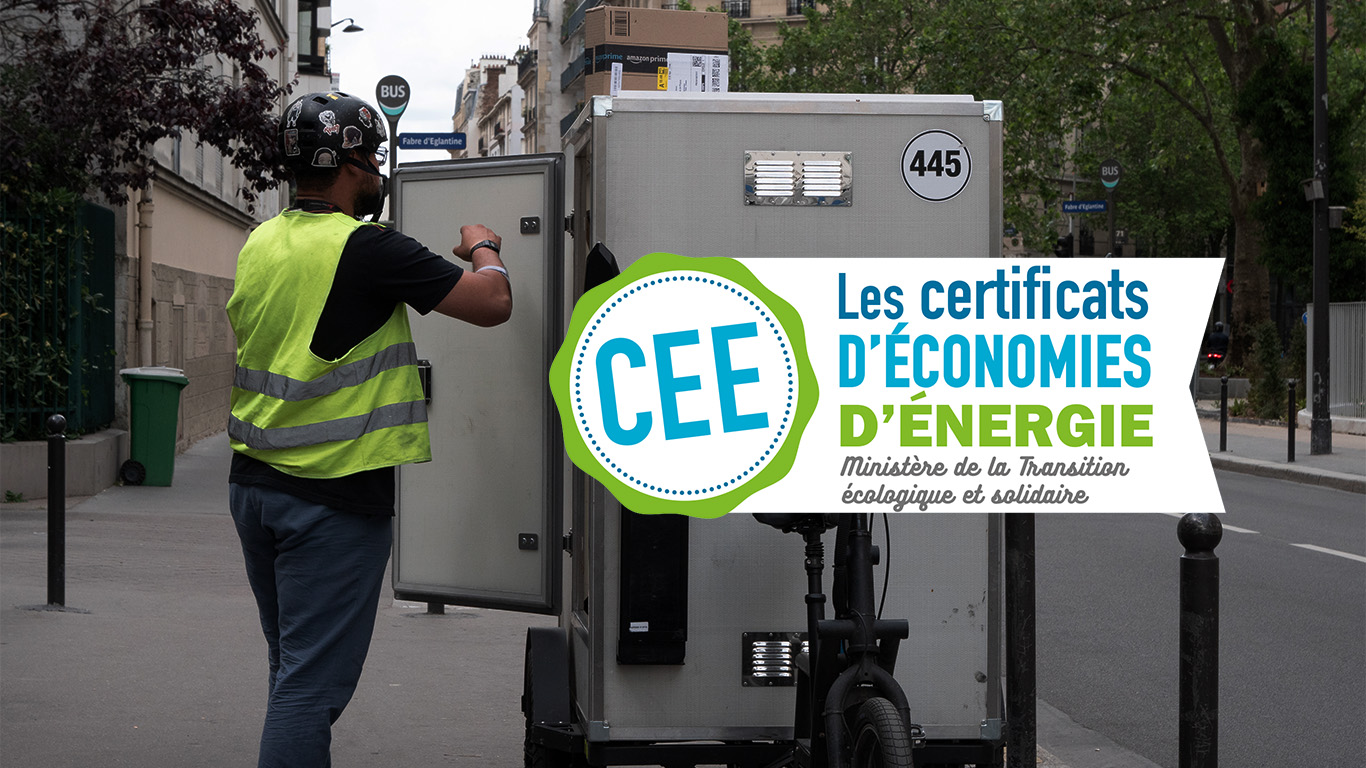
Professional e-trike and safety: best practices and essential equipment
E-trike, designed primarily for transporting people or goods in urban areas, are gaining popularity thanks to their flexibility and efficiency. They are ideal ecological alternatives to reduce clutter And the pollution in urban centers.
However, their safety is a crucial aspect that should not be overlooked. In this article, we'll explore the current regulations surrounding scooters, review safety features, and share best practices for safe driving.
Reminder on the regulation of tricycle vehicles
As assisted electric vehicles (VAE), scooters are subject to various regulations that aim to guarantee their safety and that of their users. These regulations vary slightly by country, but there are general standards that users and manufacturers should be aware of.
Classification and general regulations:
Scooters or cargo bikes are classified as electric bikes (VAE), which means that they benefit from regulations similar to that of conventional electric bikes.
In Europe, for example, this classification subjects them to the EN 15194 standard, which states that the electrical assistance must be switched off automatically as soon as the Vehicle reaches 25 km/h. In addition, the motor power should not exceed 250 watts. If these criteria are not met, then the vehicle falls into the moped category, in which case the regulations are quite different.
These limitations ensure that scooters remain in the category of VAE and not mopeds. Thus, three-wheel scooters do not require Driver's license, insurance or registration.
Access to bike paths:
Thanks to their classification as VAE, scooters are allowed to drive on bike paths, which represents a significant advantage in urban areas.
This allows scooter users to benefit from safer and less congested routes, thus avoiding lanes where there is heavy car traffic.
Mandatory safety equipment:
As with any vehicle intended for use on public roads, three-wheel scooters must be equipped with standard safety devices.
This includes visible reflectors, a lighting system suitable for nighttime driving, and signaling devices such as bells or horns. In addition, although wearing a helmet is not always mandatory for adults, it is highly recommended, and often mandatory for children in many territories for individuals.
Weight limitations and dimensions:
Scooters are often used to transport heavy or bulky loads, especially in a professional context.
However, it is important to respect the weight limitations and dimensions prescribed by the manufacturer to avoid overloads that could compromise the stability of the vehicle and increase the risk of accidents.
Training and awareness-raising:
Even if driving a scooter does not require a specific license, raising awareness about driving this type of vehicle can be extremely beneficial, especially for professional use.
Some manufacturers or sellers offer test sessions to help new users become familiar with the particularities of driving a scooter.
Responsibility of manufacturers and users:
Scooter manufacturers are required to comply with safety and quality standards when designing and manufacturing their vehicles. This includes using sturdy materials, conducting regular safety tests, and ensuring that all electrical components are reliable and secure. For their part, users must ensure that their scooter is regularly maintained and that all safety features are in good working order.
These regulations are not only intended to protect scooter users, but also to ensure harmonious coexistence with other road users. By complying with these standards, scooter users contribute to the overall safety and efficiency of urban transport systems.
Safety: Design and construction of the tricycle
Scooter safety is not limited to passive or active safety equipment, it starts at the design phase and continues throughout manufacturing. Sturdy construction combined with smart design ensures that scooters are not only efficient means of transport, but also safe for drivers and passengers.

Stability and Robustness
The scooter, by its very nature, is designed to offer greater stability compared to traditional bikes. This is due to its three-wheel structure that distributes weight in a more balanced way. Scooter manufacturers use high-quality steel or aluminum frames to ensure not only durability but also the ability to handle heavy loads without compromising maneuverability. Stability is crucial when it comes to transporting goods or passengers, especially in urban conditions where surfaces can be uneven and unpredictable.

Advanced brake systems
A very important aspect in the design of three-wheel scooters is their braking system.
Since these utility bikes are often used to carry significant loads, they are equipped with braking systems that can provide increased stopping power.
Hydraulic disc brakes are fairly common on this type of vehicle, offering a quick and reliable response even under heavy load. They ensure that the vehicle stops effectively when necessary, thus increasing overall safety.

Visibility and Lighting
Visibility is another priority in the design of tricycle vehicles. Many models are equipped with highly visible LED lighting systems and built-in reflectors to ensure that they are clearly visible at any time of the day and in any weather.
These elements are essential not only for the safety of the driver but also for the safety of other road users.

Passenger and cargo protection
In the case of scooters designed for the transport of passengers or sensitive cargo, additional measures are taken to protect the contents of the vehicle. For example, enclosed or semi-enclosed cabins with seat belts and roll bars may be included for passengers. For cargo, lockable, weatherproof boxes ensure that goods arrive at their destination in their original condition, protected from damage and theft.

Compliance with safety standards
Finally, the design and construction of scooters must comply with the rigorous safety standards established by local and international authorities. These standards ensure that every aspect of the scooter, from the resistance of the materials used to the reliability of the electrical and mechanical components, is tested and certified to ensure maximum safety.
Manufacturers committed to quality follow these guidelines closely to offer products that are not only efficient but safe.
Concretely, safety in the design and construction of scooters is not an afterthought; it is integrated from the early stages of product development.
Best practices for safe driving
The safety of scooters does not only depend on their design and equipment, it is also based on the best practices adopted by drivers. Here are some essential recommendations to ensure safe driving when using scooters in a professional context.
Training and awareness-raising:
Before starting to use a scooter, it is crucial that drivers receive adequate training. This training should cover not only the basics of driving but also the specificities associated with handling a vehicle that is larger and heavier than traditional bicycles. Understanding how to distribute weight optimally, how to maneuver in tight spaces, and how to respond in an emergency situation are essential skills for any scooter driver.
Pre-checks:
Before each use, a quick check of the scooter can prevent accidents. Points to check include tire pressure, brake condition, lights and signals function, and the integrity of attachments and loads. An audit routine can help identify problems before they lead to dangerous situations.
Compliance with traffic rules:
Like any other vehicle, scooters must comply with the rules of the road. This includes respecting traffic lights, traffic signs, and the correct use of traffic lanes.
In urban areas, where scooters are often used, it is essential to be careful and courteous to other road users, especially pedestrians and cyclists.
Use of safety equipment:
Wearing a helmet may not be mandatory everywhere, but it is highly recommended, especially in urban environments where the risk of collisions is higher. High-visibility safety vests are also a plus to improve the driver's visibility to other road users, especially during low-light hours or at night.
Regular maintenance:
Even if driving a scooter does not require a specific license, raising awareness about driving this type of vehicle can be extremely beneficial, especially for professional use.
Some manufacturers or sellers offer test sessions to help new users become familiar with the particularities of driving a scooter.
Responsibility of manufacturers and users:
Regular maintenance of the scooter is essential to ensure its longevity and reliability. This includes periodic checks by professionals to ensure that all mechanical parts are working properly and that the security systems are in good working order.
By following these best practices, scooter drivers can not only ensure their own safety but also that of the people and goods they transport. This contributes to a safer and more enjoyable driving experience for everyone.
In conclusion, adopting best safety practices and equipping yourself properly are essential steps to ensure the safe and effective use of scooters.
By complying with regulations, by being properly trained, and by regularly maintaining their vehicle, scooter users contribute to safer and more environmentally friendly mobility. This compliance with standards and best practices ensures not only Their safety but also that other road users.
.svg)

.svg)
.svg)


